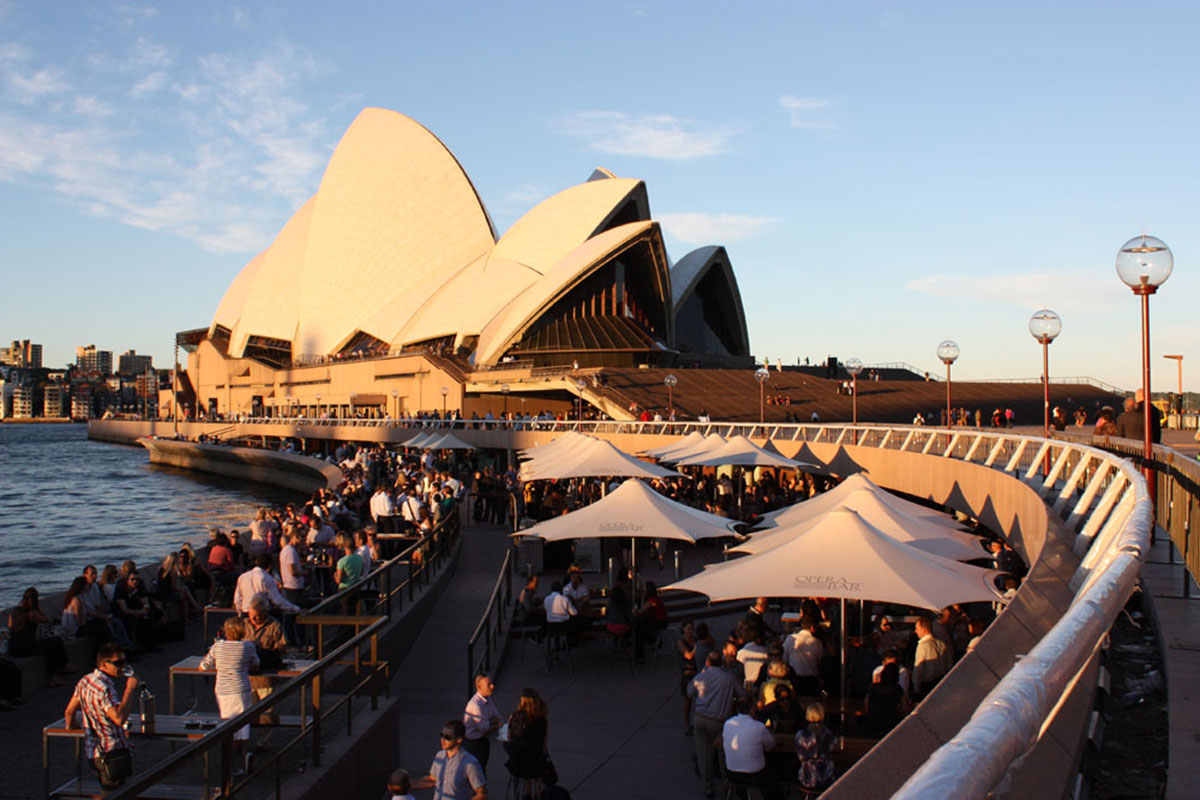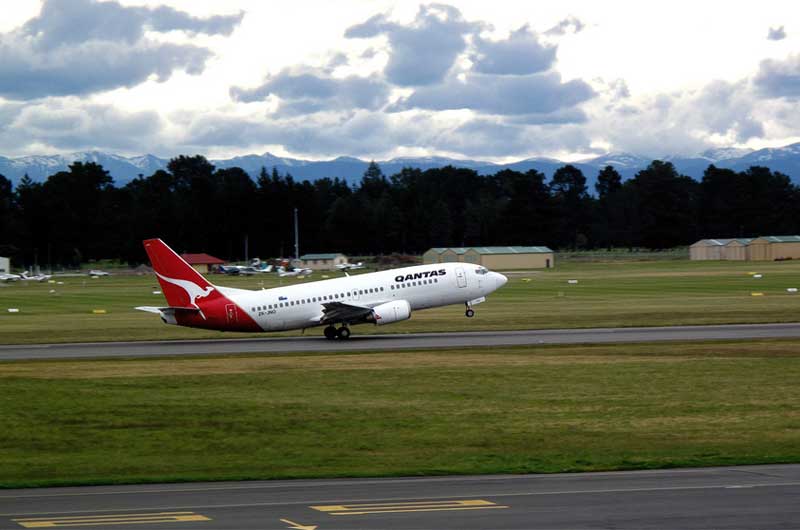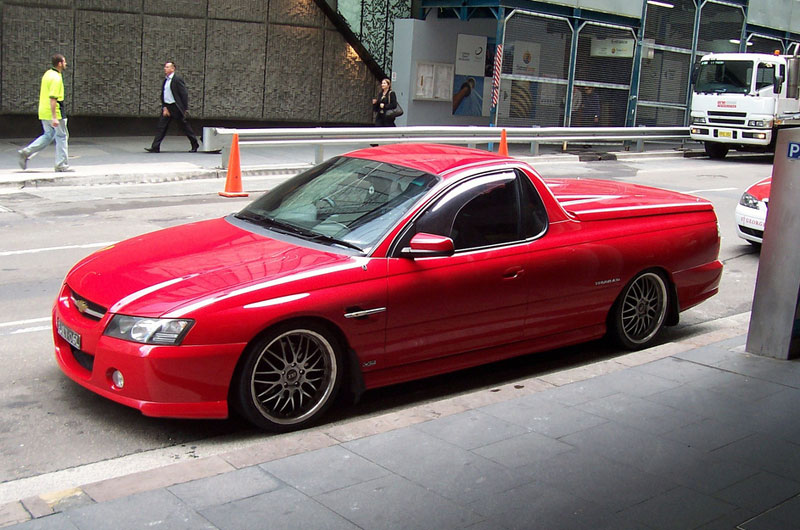So then, it’s come to this. You’ve developed a taste for XXXX Gold and possibly even vegemite (or at least survived your first exposure to the tangy black death); added zip ties and googly eyes to your bicycle helmet in an attempt to keep the magpies away; started clipping most place names and words or adding an “o” to the end of them (Brissy, Tassie, serve-o, bottle-o, etc.); heeded the warnings about the vicious drop bear; and, most importantly, made “slip, slop, slap” (as in slip on a shirt, slop on some serious sunscreen and slap on a hat) your new personal mantra. Sounds to me like you’re just about ready to head down under to Australia on a working holiday visa (WHV).
Now that the cultural stuff has been worked out, all that’s left are the nuts and bolts of it. Unfortunately, it’s not as simple as booking a short (ha!) flight and jumping aboard – visas need to be sorted, travel insurance purchased, bank accounts opened and finances set up, in addition to a plethora of other details. Nevertheless, if you’re keen on having a barbie on the beach with your mates, surfing, snorkelling and maybe even seeing Uluru, feel free to use the following guidelines to get you started on your adventure to the Lost Continent.
Getting your Working Holiday Visa

Don’t even think about turning up at an airport in Australia without a visa if you’re planning on working and living here for awhile. The WHV is specifically designed to let travelers aged 18-30 supplement their travels through Australia with casual, short-term work. To apply, you must be at least 18 years of age but not have turned 30 yet. Once approved, you have up to a year to enter the country; so, if you get your visa the day before you turn 30, you’re eligible to come in until the day before you turn 31. For the young’ins, you must have turned 18 by the time your application is submitted. And now for the interesting bits.
There are two main different subclasses of WHV: 417 (for Belgium, Canada, Cyprus, Denmark, Estonia, Finland, France, Germany, Hong Kong, Ireland, Italy, Japan, Korea, Malta, Netherlands, Norway, Sweden, Taiwan and the UK) and 462 (for Argentina, Bangladesh, Chile, Indonesia, Malaysia, Thailand, Turkey, the USA and Uruguay). Subclass 462 allows travelers to live and work in Australia for one year, as long as you’re not with any single employer for more than 6 months. 417 is the same save for one bonus: if you work for 88 days in a rural post code during your first year, make an application and have your employer sign off on it, you can stay in Australia for a 2nd WHV.
Both visas allow you to freely enter and exit Australia for the duration that your visa is valid (this won’t disrupt your 88 days at all, as you can do them as a mishmash of work for several different employers at any time in year one), and applications cost about $365 CAD (approx. $350 USD). If you’ve been living abroad for the last few years, as I had been, you might have some additional requirements to meet. As I’d taught in English in South Korea and China for the previous four years, I was required to visit a special immigration doctor in London, ON, who referred me to get a chest x-ray that proved I didn’t have TB. Others could require a full physical, depending on where you’ve been living.
Consult the Australian Immigration website for visa options, facts, working information and the on-line application.
Booking a Flight
Now that you’ve got your WHV good to go, it’s time to get yourself ready for a 15 to 20 hour flight! For the uninitiated, long haul flights can be rough – especially if you have trouble falling asleep while sitting up, like I do. You can always try plying yourself with booze, but be careful. If it doesn’t put you to sleep, you’ll get to Oz tired as hell and halfway in the bag. And now for the helpful bits.
If you’ve got the luxury of planning your trip well in advance, be sure to trawl the discount comparison sites daily for cheap flights and spot sales. Expedia, Orbitz, Kayak, SkyScanner, AirAsia X – all should give you myriad options. It’s always cheaper to book return, but this is advisable only if you know the exact date you want to go home. If not, a one-way will get you here and you can sort out a flight home later on, a good idea for those on a 417 visa planning to stay for at least part of a 2nd year. Furthermore, direct flights, while faster, are often more expensive. If you’re willing to stop and change planes a few times (Fiji has a festive band playing in the airport to greet you, hey?), you can likely get here for less.
Travel Insurance (For all the Nopes)
It’s a pretty well-known joke that Australia is full of nopes. Poisonous snakes, saltwater crocs, spiders, drop bears, suicidal kangaroos jumping across the highway in front of your car and the dreaded goon merely scratch the surface of things that make life here interesting to say the very least. You never want to have to visit the hospital, but you especially want to avoid a trip to the emergency room here without some sort of travelers insurance. An ambulance ride for a broken leg can set you back a few years if you’re not covered. And now for the serious bits.
Before you leave, contact your bank or credit card provider to ask about insurance rates. TD Canada Trust offered six months coverage for just shy of $600 CAD, but with a caveat: after it ran out, you had to physically be back in the country to renew. The Cooperators Insurance Group offered one full year for just over $1000. Ultimately, I settled on insurance from World Nomads, the travelers insurance officially endorsed by Lonely Planet. For $438 CAD I secured six months of travel insurance and the ability to renew from anywhere in the world online (just don’t let it lapse first). The coverage is solid as well, extending to pretty much everything except skydiving and excursions to Antarctica. Shop around for what suits your needs and budget.
Money
Life in Australia is expensive. Think Toronto, New York, Los Angeles expensive. The Australian government suggests bringing $5000 AUD in start-up funds, but this is just a general guideline. For $3700 I was able to get here, spend two weeks in Brisbane getting set up with a car, insurance, registration, camping gear, etc. and still have more than enough to make it to a city three hours away to search for work for a few weeks. $2000-$3000 AUD minimum is advisable; bear in mind that it’s well within the customs agent’s authority to demand to see your financial statements upon arrival, and deny entry if they deem you don’t have enough to get going (although this is extremely rare). And now for the bank-y bits.
The “big four” banks in Australia are Commonwealth Bank, Westpac, National Australian Bank and Australia and New Zealand Bank (or ANZ), and you should seriously consider opening an account before getting here. For starters, it makes things easier upon arrival. I applied online to open a CommBank account and was approved a few days later. Since I was starting my trip in Brissy, I nominated the Brisbane CBD as my home branch, and on the day I got here simply entered the bank, presented my approval letter and passport and was presented a debit/credit card for an opened account which was ready to use. Secondly, opening an account beforehand means you can skip hauling around large amounts of cash and travelers cheques. Your approval letter should contain your branch name, address, and BSB and account numbers, which you can use at your home bank branch to transfer money to Australia ahead of time. So, when you get here, you’ll also have Aussie dollars in your account ready to go.
The account options and monthly fees look more or less the same for the big four, so visit the sites and do some research to see which one is best for you.
Wheels
They drive on the wrong side of the road here, in case you didnae know. There’s nothing quite like entering the front right door of a car (or maybe a ute? They’re called trucks, you weirdos) for the first time to get behind the wheel, shifting with your left hand, or looking left first and then right before turning (or crossing the road as a pedestrian, for that matter) to inspire feelings of terror and general vehicular inadequacy. You can get used to anything after enough time, sure enough, but god bless your soul if you drive your car off the lot in Brisbane and have to make it home with no maps and GPS while constantly flipping on the goddamned windshield wipers instead of flicking on the turn signal. Frustrating, man! And now for the 1997 Ford Falcon Sapphire GLI edition (aka Sally Sapphire) and official government stuff bits.
Canadian licenses allow you to legally drive in Australia for up to three months after entry. After that, you’ll need an official international license. Surprisingly, this is not done through federal or provincial/state governments in North America, but CAA (or in the US, you’ll be using AAA). All you have to do is visit your local CAA, present your valid provincial driver’s license, a passport sized photo (colour or black and white will do), fill out the application and pay $25 and after 20 minutes or so, voila! your very own international license. Validity is one year, so if you’re staying for two it’s a good idea to fill out a second application, have a second photo and photocopy of your license ready and leave them all with the $25 fee in the hands of a good mate back home. They can submit everything for you, get the int’l license and then post it to your current address in Australia.
Buying a car and getting it on the road is an entirely different matter altogether. (Gumtree) is a great website for used and second-hand goods, and you should be able to find adverts from other outgoing backpackers looking to unload their jalopies. Then there’s always the used car lots. We picked up Sally for a mere $1150. Be sure to take the car for a good test drive and inspect it before making any commitments. And keep in mind the size and strength you’ll need as well. Going up the Stuart Highway through the Outback in a little 2-wheel drive, 4-cylinder might not be the best idea. Plenty of backpackers opt for Holdens and camper vans, for the storage space and ability to possibly sleep in it overnight. Once you’ve got a car, you’ll have to get it road worthy, purchase CTP (certified third-party insurance) and take it in to the local government transport office to get it registered. After all those things on top of the purchase price, our car was on the road for just $2200.
Taxes and Other Tips
Sweet! You’ve got it all figured out now, except for the things you don’t. And now for the itty bitty teeny tiny miscellaneous little bits.
Once you get to Australia, you’ll need to apply for a Tax File Number (TFN). You’ll need this in order to secure official employment. If you want to get to work straight away, apply online the day you get here and you should receive your number in the mail in about a week.
This brings me to my next point, having an official address in Australia for correspondence and registration purposes. I was lucky enough to have a friend living in a share house in Brisbane that offered to put me up for my first few nights. Magically, my mate and I managed to worm our way into their collective hearts and the first three nights turned into two weeks. This was extremely helpful for our applications for a TFN, clip pass for the tollways, cell phone SIM cards, and to register the car and get it insured. Big shout out to everyone at 47 Blakeney Street in Highgate Hill, thanks guys! If you don’t have anyone to crash with, you should consider sorting out a hostel for the first few nights you’re here. You might be able to use the hostel address for registration, and if you’re traveling alone it’s a great way to meet friends who might want to come with you and possibly share some costs.
Finally, don’t forget that electronics here run on different voltages than back home (220W v 110W). For most things you’ll need a voltage converter. Your laptop battery should have a built-in voltage converter in it, so for that you’ll just need a plug converter, as the ends are different. Don’t forget a bit of Aussie cash for your first few days, and you should be just about set.
G’day.
Photos courtesy of Flickr, zoeshuttleworth (CC BY 2.0), Nosha (CC BY-SA 2.0), Auburn Alumni Association (CC BY 2.0), Premshree Pillai (CC BY-NC-SA 2.0), n_willsey (CC BY-SA 2.0)
Slider courtesy of Flickr, Andy Tyler
Make your next trip the best one.
Departful is a full service travel agency creating truly exceptional travel experiences that are 100% personalized to you. Wherever you’re going, whatever your interests, we help you plan the perfect trip.
Alex Rathy
Alex is a writer, ESL teacher, baseball enthusiast and Hunter S. Thompson fanatic currently based in Sydney, Australia. He has previously lived in Canada, the U.S., South Korea and China and has traveled extensively throughout Asia. He enjoys hiking, spicy food, dance parties in the jungle, questionable hairdos, Vonnegut novels and has been known to appreciate a good hammock on occasion.
More travel inspiration from Departful
21 Comments
Add comment Cancel reply
This site uses Akismet to reduce spam. Learn how your comment data is processed.







Departful Some useful info there. Thx for sharing
Great post AlexRathy! I have a new dream trip and dream car now.
TourismAus Thanks for the RT! We’ve had a great experience so far and will be writing more about it on Departful! Cheers – AlexRathy
TourismAus: RT Departful: How to Start Your Working Holiday Down Under: http://t.co/GtW6zDK8My #Australia #travel TourismAus” great times
TourismAus Departful Love this explanation! ! Get out the word but be careful when people don’t want to leave 🙂
Departful Glad you’re enjoying your travels Down Under. Keep up the good work
It’s great to be in Oz these days! 34-2 shellacking of the Kiwis in the Rugby League WC final, a whitewashing of the Poms in the Ashes…if only it weren’t 40 some-odd degrees in Central Queensland.
one factual thing, “To apply, you must be at least 18 years of age but not have turned 30 yet” to my surprise and that is why I am going, it is, ‘not have turned 31 yet” thanks for the other tips i cannot wait to start my year 🙂
Hi MzIndependent, you must apply for the WHV and be approved before you turn 30. So as long as you get it up to the day before that, you’ll have up until the day before you turn 31 to enter and start your visa time, as you get 1 year after you get the visa to enter.
JPBervoets Sally’s not for sale. Ever.
@Alex I was telling you because I am from the US and i applied a month before i turned 31 and it got approved this was for the Visa 462, i guess depends what country you are from perhaps… https://www.immi.gov.au/Visas/Pages/462.aspx so i was just commenting just to tell people that are already 30 not to lose hope. BTW thanks so much for the tip about the bank, and lol I was so worried about the ‘expensive part, then i read this… ” Think Toronto, New York, Los Angeles expensive”. Well I live in LA, so pheew shouldn’t be That bad then 🙂
There’s no way to enter on a WHV and convert/apply to a permanent situation once you’re there, correct?
@J @J As far as I understand it, it is possible to get a more permanent gig after you start on a WHV but it can be difficult. I’ve heard things about you need a sponsor in Australia to go through a lot of paperwork for you, and they have to prove that they can’t find an Australian around to do the job. With that said, if you’ve got some highly specialized skills or qualifications, that could possibly help you get a job (think teacher, engineer, doctor, etc.) See what you can find online. Hope this helps.
@J As far as I understand it, it is possible to get a more permanent gig after you start on a WHV but it can be difficult. I’ve heard things about you need a sponsor in Australia to go through a lot of paperwork for you, and they have to prove that they can’t find an Australian around to do the job. With that said, if you’ve got some highly specialized skills or qualifications, that could possibly help you get a job (think teacher, engineer, doctor, etc.) See what you can find online. Hope this helps.
@Alex thank you!
kikijets89 Thanks for sharing the article! Let us know how it goes and if AlexRathy forget any key points! Then we can fire him. 😉 ^JP
Departful kikijets89 AlexRathy Glad to help Jetstar. Jp, there’s a boomerang coming your way…you won’t know it till it hits ya
TravelSages Thanks so much for sharing the article! http://t.co/lkEP0FNqqO AlexRathy
This is an amazing guide to going for a working holiday to Australia – which is my goal for next year when I graduate! It’s probably the best guide I’ve found so far, especially as it is geared towards Canadians.
NEwanderlust Thank you!!
Appreciation to my father who told me regarding this website, this website is really remarkable.